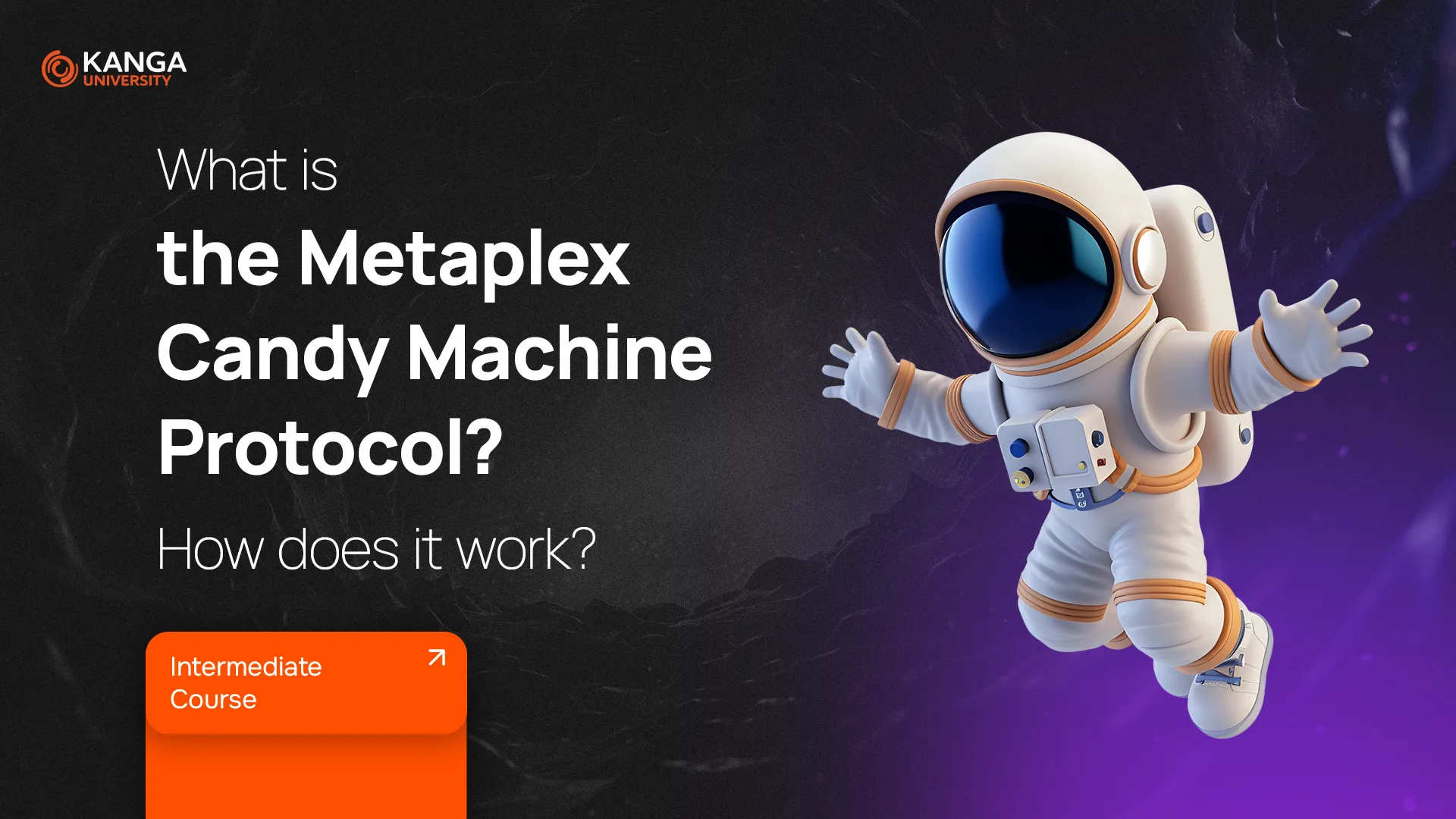
In the fast-moving world of NFTs, launching a digital collection can be overwhelming. From technical setup to secure distribution, creators face many challenges. Metaplex Candy Machine, a protocol built entirely on the Solana blockchain, simplifies this process and has become one of the most popular NFT tools on the network.
By September 2022, over 78 percent of all NFTs on Solana were minted using Candy Machine. Since then, it has continued to evolve, offering more flexibility and control for both creators and collectors.
This lesson breaks down what Candy Machine is, how it works, and why it plays a key role in the Solana NFT ecosystem.
What Is Metaplex Candy Machine?
Metaplex Candy Machine is a framework that allows creators to generate and distribute NFT collections on Solana. It works like a programmable vending machine for digital assets. Creators upload their NFTs, configure the rules, and let collectors mint them directly on the blockchain.
Candy Machine is known for being highly customizable and secure. It supports different types of payments, prevents bot attacks, and allows creators to control exactly who can mint and when.
Key Features of Candy Machine
-
Flexible payments: Collectors can pay using SOL, SPL tokens, or even other NFTs, depending on the configuration.
-
Bot protection: A “bot tax” can be applied to failed transactions to prevent mass minting by automated bots.
-
Custom minting groups: Creators can set up different groups with their own minting conditions, such as pre-sale access or limited editions.
-
Access control: Only selected wallets or NFT holders can mint tokens, depending on the creator’s settings.
-
Verified collections: Using Metaplex Certified Collections (MCC), creators can group their NFTs under a verified banner for greater credibility.
How NFT Minting Works with Candy Machine
-
Create the Candy Machine: The creator sets parameters such as supply, mint price, launch date, and metadata rules.
-
Upload NFT assets: Each NFT is loaded with essential details including a name and a URI pointing to its metadata.
-
Launch the mint: Once live, users can mint NFTs by sending a transaction to the smart contract. Optional verification steps like CAPTCHAs or Merkle Proofs may be required for added security.
-
Post-mint cleanup: Once the collection is minted, the Candy Machine can be deleted to reduce storage load on the Solana blockchain, freeing up resources and lowering costs.
What Are Candy Guards?
Candy Guards are optional modules that add security and customization to the minting process. They allow creators to define detailed minting rules, such as:
-
Wallet verification
-
Limiting the number of mints per user
-
Setting start and end times for sales
-
Charging extra fees for suspicious behavior
These features help ensure fairness, especially during high-traffic NFT launches.
Why Use Metaplex Candy Machine?
Candy Machine is trusted by both new and experienced creators because it offers:
-
Fair and transparent distribution of NFTs
-
Built-in protection against automated attacks
-
Lower fees compared to other networks, thanks to Solana’s scalability
-
Full customization of the minting experience
-
Integration with the broader Solana NFT ecosystem
These benefits make it one of the most powerful tools for launching NFT collections today.
Summary
Metaplex Candy Machine gives creators the ability to mint and distribute NFTs in a secure, flexible, and user-friendly way. Whether you’re releasing your first digital collectible or managing a large-scale drop, Candy Machine provides the tools needed to do it right.
Its adoption by top Solana projects and ongoing development make it a reliable and future-proof choice for anyone building in the NFT space.